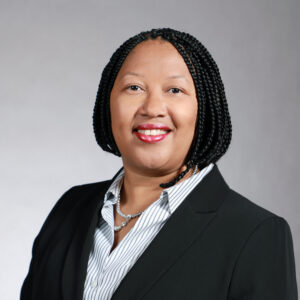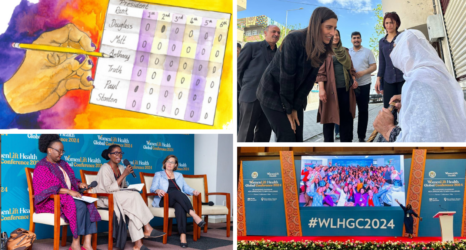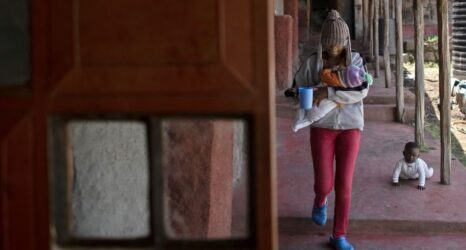Launching Tuesday, Feb. 1, and culminating on March 10, the Harriet Tubman Bicentennial Project pays tribute to this feminist icon with a special commemorative issue through Ms. online and in print. Explore the interactive groundbreaking site here.
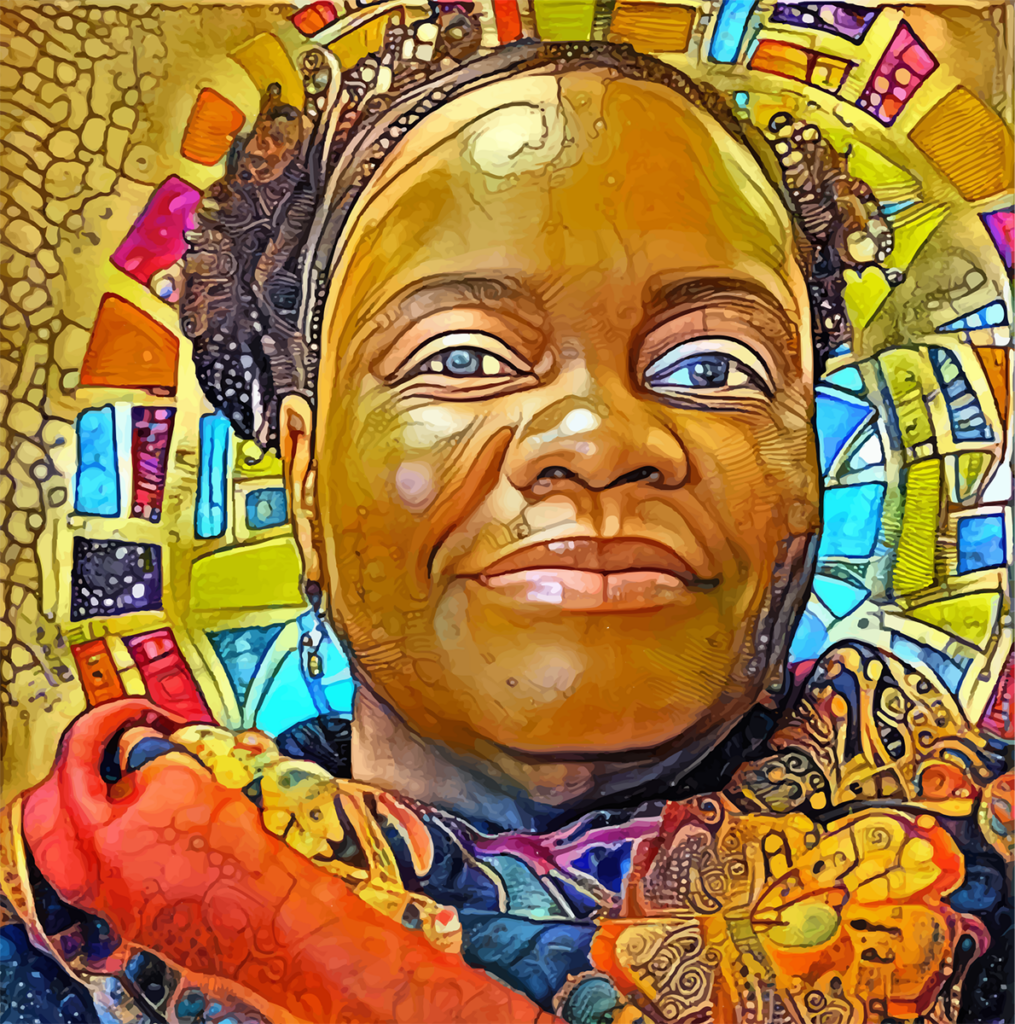
Nettrice Gaskins is a digital artist and self-identified Afrofuturist whose work has been receiving national attention. A 2021 Ford global fellow, Gaskins’s work is featured in the current “FUTURES” exhibit at the Smithsonian. She is assistant director for the STEAM Learning Lab at Lesley University in Cambridge, Mass., and she recently published her first book, Techno-Vernacular Creativity and Innovation, with MIT Press.
Ms.’s Janell Hobson, who invited Gaskins to create original art for the Harriet Tubman Bicentennial Project, interviewed the artist over Zoom.
Janell Hobson: Could you describe the process you used in your artwork “Beacon of Hope”?
Nettrice Gaskins: I choose image styles usually based on whatever the base photo inspires in me, so if it is somebody as well-known as Harriet Tubman, there are things I think about in terms of the North Star. There was a quilt of the cosmos that had these elliptical designs on it inspired by the universe. I used that. I also used an archive of images that I often go to for particular styles, and there’s one that has a very bronze metallic fantasy-like quality, so I also incorporated that.
Hobson: You usually work with AI technology to create your art. Could you say more about that?
Gaskins: I use an AI tool called Deep Dream Generator. It’s a computer vision program that came out of Google and is similar to facial recognition technology. There is a lot of criticism about that technology, especially with Facebook. It’s been used in positive ways but also negatively, especially in vulnerable communities, in Black and brown communities where it’s been used for racial profiling or tagging people.
Deep Dream is in the same family, but it is a way to create art. It came out in 2015, and then Google released it to the world. People started using it to generate their own platforms and tools, and that’s where I come in. I was teaching AP computer science, and all of my students were arts majors at an art high school. I wanted to find ways to connect the computer science concepts with what they knew in art. I found Deep Dream when I was searching for ways to introduce algorithms. And I played around with it to teach the students, and then I started to use it for my own work.
Hobson: What made you think this technology would be useful in creating Black subjects and Black aesthetics?
Gaskins: I’ve been looking at how images of Black and brown people in photography and film over the decades—and even centuries—have been negative. They hadn’t developed technology to truly capture the skin, the look of Black and brown people, so as a result, photo technologies kind of wash out features, they dull the skin, so we don’t see the glow or shine that you see in real life.
In the past, in Hollywood cinema, lighting technology used a bunch of what was called “Shirley cards” and other cards named for leading ladies in film—where they’re calibrating the camera to the film to basically process for lighter skin. But we can now change the system so that it’s calibrated for other types of skin tones and colors. I’m using images to do just that, to bring out the warmth, bring out the light, bring out the color in a different way than has been done in the past. We can now do that with AI.
Hobson: I’m curious about the name “deep dreaming” because it immediately puts me in the mind of how Harriet Tubman was always dreaming. Did you make that connection in any way?
Gaskins: During the process of learning how to use the tool, I realized the creators of the tool were thinking about computers that could think on their own. Terminator level stuff, like: Can a computer really think on its own? Does it dream? That’s where the original idea came from, and not only do I see computers dreaming, but there’s also dreamtime learning in Aboriginal culture, where they’re taught through dreams, as opposed to the way we think of teaching here in the United States. I’ve actually made a connection between that concept of deep dreaming and Aboriginal culture, this idea of the computer dreaming in collaboration with humans. We can also connect this to Harriet also having dreams, very much in the same way of Aboriginal people.
There’s a film called Rabbit-Proof Fence that came out years ago, in which the main character dreams her way home. She’s escaping oppression. To do this, she lays down when she reaches the end of the fence that she and her younger sister follow. She remembers things from what she was taught in her dream, and then she wakes up and has an idea about how to get home. They were taken from their families and forced to live in a boarding school for Aboriginal children that was basically a plantation, and these children escaped on their own. This is very similar to Harriet Tubman in terms of dreaming and freedom.
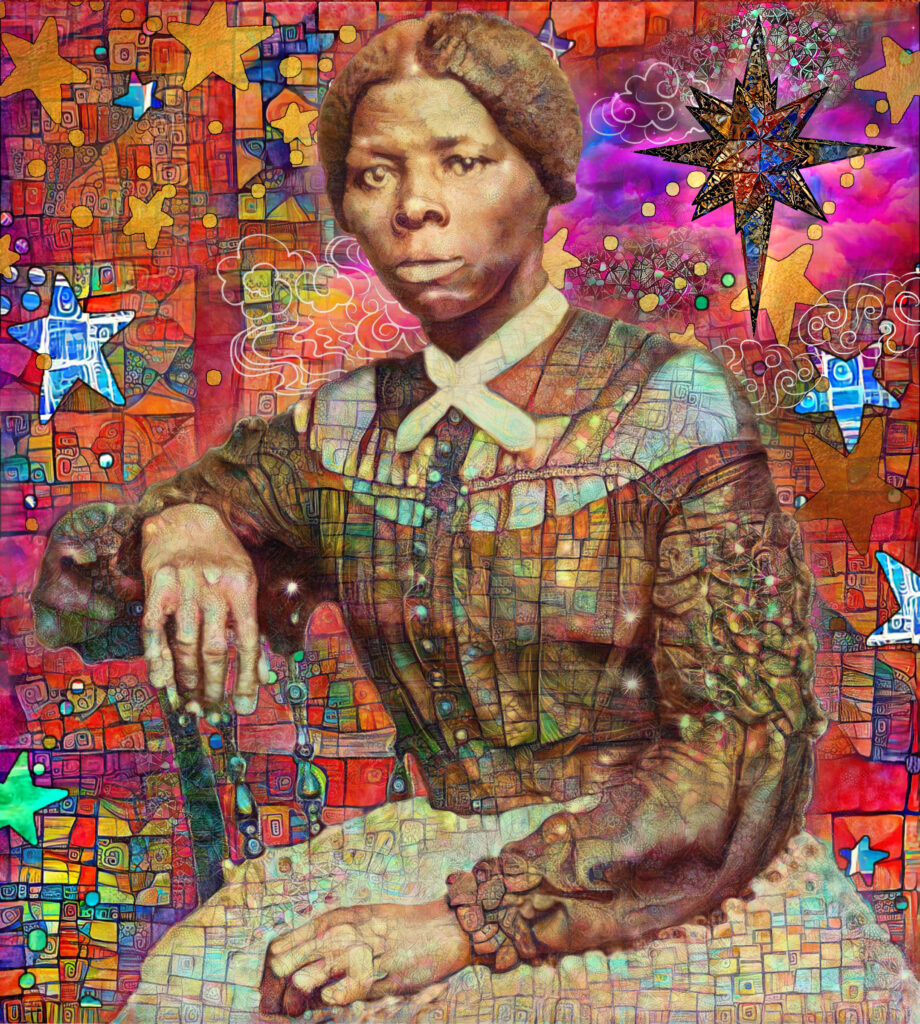
Hobson: That connection puts me in the mind of Afrofuturism. I noticed that you describe yourself as an Afrofuturist, so could you talk about Afrofuturism, and how you see it related to your art? How is Afrofuturism related to someone like Harriet Tubman?
Gaskins: I wrote an essay for a book Afrofuturism 2.0: The Rise of Astro-Blackness, and I talk about the Underground Railroad, the story of Harriet Tubman as a conductor on the Underground Railroad, and how she used the North Star as a way out of slavery, using maps and technology in order to escape. When people think about technologies, they think in terms of a white box technology, which is coming from dominant culture, as opposed to the technology that is a tool to use to do something practical. Harriet Tubman was able to conceptually use the Underground Railroad and the North Star as a guide to create a path to escape.
She dreamed for herself a future. She saw that her people, her community, would be free and living free in a different place. Because she never had that experience, she had to create something that doesn’t exist yet, and something that is only in her mind. Based on all those things—the tools she had, the technology, nature— that’s what Afrofuturism is. The ability to craft the future or to predict or project out and create something new and different that doesn’t yet exist in the present reality is very much what Afrofuturism is. The use of AI to create new types of aesthetics, new types of imagery, is an Afrofuturistic pursuit because I’m taking something from the past – in this case, a base image – and then in my brain, I’m processing how I want the results to be and then what tools, what technologies, I could use to get to that place.
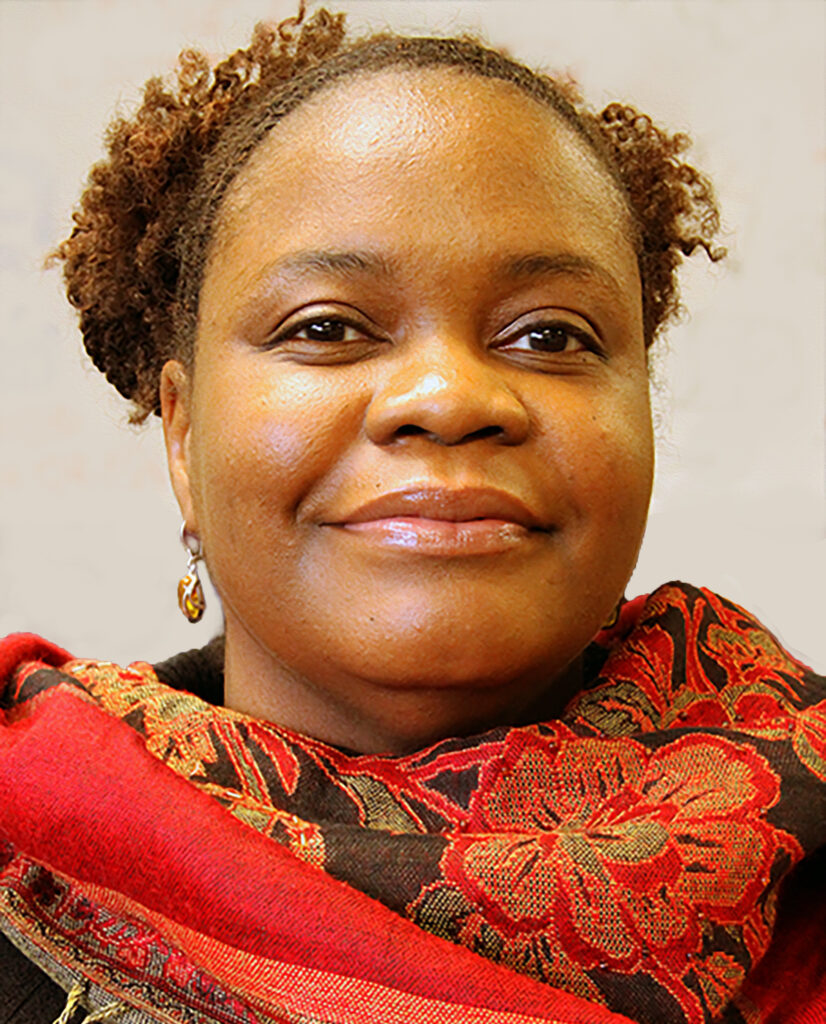
Hobson: Since we’re projecting futurism, what are your thoughts about the future?
Gaskins: I mean, we’re dealing with a pandemic that’s global, but they’re all kinds of forces in that pandemic, the biggest one being education in my opinion, because the educational system in the United States was already on tenuous ground to begin with, and then when the pandemic hit, it only spiraled even further. And communities that normally are vulnerable in that space, are now even more so. I am in education, and I’m actually at Lesley University where I’m in a K-12 education program, so we talk to the teachers directly, and we work with students. We could see the impact on students. What will the world look like after the pandemic? I don’t think there will ever be a return to the way things were.
There needs to be a design process for the future, just like I go through with the portraits that I create to come up with plans for what I want to see. We don’t need to wait for things to happen. But there’s a lot of resistance to change, resistance to even ideas of what education should be in terms of Critical Race Theory, which isn’t necessarily part of the K-12 curriculum, but people have used it to maintain white supremacy. So, here we are fighting again for some of the things that our ancestors were fighting for on a different level. How do we use what we’ve done in the past, based on what we have in the present, to create a different scenario for ourselves in the future? And people have to get into a different frame of mind in order to not feel helpless and hopeless, to be able to think and be proactive about the future.
She dreamed for herself a future. She saw that her people, her community, would be free and living free in a different place. Because she never had that experience, she had to create something that doesn’t exist yet, and something that is only in her mind.
Hobson: How do you see your art moving us in the kind of direction we should be heading toward?
Gaskins: Last summer, we spent four weeks in a high school with about 16 to 18 teenagers from different grades, and they were learning AI, art and robotics at the same time, and then their capstone project was to create a robot that made art.
Hobson: That’s really cool!
Gaskins: These were high school students, who had to learn to code. They had to learn about engineering, and then they also had to learn art and storytelling in order to create these robots that they presented to their community. Many of the activities that I’ve been doing since the pandemic hit have been inspired by Afrofuturism, that was one example. I’ve been doing this biomechanical cyborg for middle school students throughout the pandemic. I use Zoom or Google Classroom, I’ve been developing these instructional guides, which have a culturally relevant aspect or culturally-situated or sustaining approach to math, to science, to technology and all that other stuff.
Hobson: There has always been a tendency to think of technology as something that is done to us, and not something that we do in terms of the technologies that we create, especially for women and Black people.
And I want to bring it again back to Harriet Tubman. You called your artwork “Beacon of Hope.” How does this “beacon of hope” relate to her memory as well as to the future? How do you see our relationship to technology as not having to be this dystopic thing like the Terminator, but something quite the opposite of that?
Gaskins: I don’t think we’re going to get to where we need to be with technology, with education, unless we change the path. We can look at Harriet Tubman’s approach to going from one situation, which wasn’t good, to a situation that was liberation. Sometimes it was spontaneous, sometimes she used improvisation. She had to be willing to re-conceptualize or remix things that were happening in order to get to a different point.
In addition to the fact that she was a former slave, Harriet Tubman also had epilepsy. She had to be really in tune with her body. Maybe some of her dreaming came from the epilepsy as well. Her disability was a challenge, but she used it as a way to help think her way out of her current circumstances. She used that epilepsy as a way to give her visions and dreams that guided her.
But she also used her environment, she used nature, she was very observant, and she was able to figure out a plan when there was none. She had help along the way; there were other people that helped her from here to there, but she was the one on the path. And she was able to create something different, create a new path.
This is how she’s giving us Afrofuturism, a blueprint for how you would go about changing your circumstances, not staying in one place. Being willing to go out into the world without a path and creating it based on what you know, what you see and what you’ve learned – like a scientist or a coder. There’s a program I need to write, and I need to figure out, line by line, how this is going to work. And then play that program again and again and again and again to free more people.
Hobson: She almost sounds like Neo in The Matrix, or rather, I should say, perhaps The Matrix was based on Harriet Tubman!
Gaskins: Absolutely! She didn’t just create the program once. She created it, and then she ran that program multiple times in order to do what she did.
The essay series for the Harriet Tubman Bicentennial Project includes:
Michelle D. Commander, “Let Me Not Forget: Harriet Tubman’s Enduring Speculative Visions” | Feb. 2
Chanda Prescod-Weinstein, “Harriet Tubman, Astronomer Extraordinaire” | Feb. 3
The Life of Harriet Tubman
Kate Clifford Larson, “Harriet Tubman: A Life Beyond Myths” | Feb. 8
“Family Portraits of a Legend: Conversations with the Descendants of Harriet Tubman” | Feb. 9
Deirdre Cooper Owens, “Harriet Tubman’s Disability and Why It Matters” | Feb. 10
The Untold Stories and Songs of Harriet Tubman
Edda L. Fields-Black, “‘Harriet’ and the Combahee River Uprising” | Feb. 15
A Conversation with Music Composer Nkeiru Okoye | Feb. 16
Maya Cunningham, “The Sound World of Harriet Tubman” | Feb. 17
Imagining Harriet Tubman
Amy Corron and Rebecca Rouse, “Why Video Games Education Needs Harriet Tubman” | Feb. 22
A Conversation with Artist Nettrice Gaskins | Feb. 23
Michele Wallace, “Harriet Tubman in the Art of Faith Ringgold” | Feb. 24
Rediscovering Harriet Tubman
Jonathan Michael Square, “The Two Harriets” | March 1
A Conversation with Karen V. Hill, Director of the Harriet Tubman Home | March 2
Douglas V. Armstrong, “Using Archaeology to Rediscover Harriet Tubman’s Life in Freedom” | March 3
Celebrating a Legacy
Keisha N. Blain, “Justice and the Meaning of the Tubman $20” | March 8
A Conversation with Mary N. Elliott, Curator of American Slavery at the Smithsonian Museum | March 9
Harriet Tubman Syllabus | March 10
Questions or press queries about the series? Contact tubman200@msmagazine.com.



